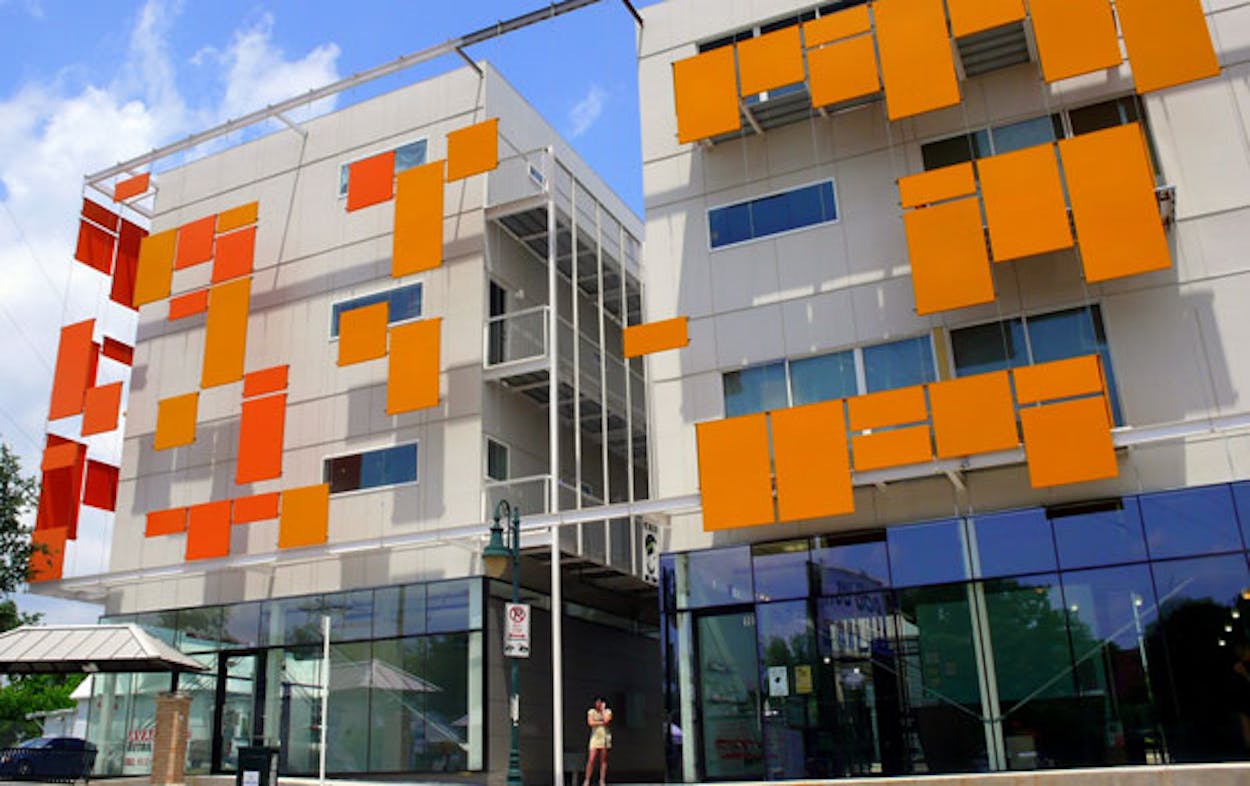Michael J Petrilli of the Fordham Institute has compiled a list of what he calls “the fastest-gentrifying neighborhoods in the United States,” with East Austin ranking number five.
The only problem is, by “neighborhoods,” Petrilli actually means “zip codes,” and by “fastest-gentrifying,” he means zip codes which have had the biggest increase in white residents between 2000 and 2010 (according to the U.S. Census).
Petrilli acknowledges that “you’d really want to look at changes in income levels, but those data aren’t available yet for 2010.”
Still, it’s hard to argue with 78702, which encompasses the bars, restaurants, renovated homes, and condominiums (like East Village, pictured above). In 2000 the zip code–which is physically segregated from downtown by the elevated stretch of IH-35–was 23.4 percent white. In 2010 that figure rose to 56.3 percent.
The state capital’s most hipster-friendly enclave even beat out the zip code for its spiritual sibling Williamsburg, as well as three others in Brooklyn.
As an education analyst (Fordham is the same think-tank that recently graded Texas’s science education standards as “mediocre to awful”) who is working on a book about diversity in public schools, Petrilli views what some might see as minority displacement more optimistically, arguing “that gentrification—for all of its downsides—is providing a once-in-a-generation opportunity to integrate some of our schools.”
But the haphazardness of his exercise is made clear by the Dallas zip code on the list. As Jason Heid of D Magazine‘s Frontburner noted:
…No. 8 in fact, is the Dallas ZIP code 75247, which saw its white population increase by about 28.3 percent between 2000 and 2010. See for yourself where 75247 is. Or I’ll tell you: it’s just west of Stemmons Freeway and is mostly industrial/warehouse land. Does anybody even live over there?
I looked at the numbers. In 2000, the total population was 254. In 2010, it was 468.
Heid speculated that the jump–and the corresponding increase in Caucasian residents–was due to a single apartment building. One of Frontburner‘s commenters agreed, saying that it was probably the Pegasus Villas high rise senior community.
And at the Atlantic Cities, Nate Berg figured out that the top finisher on Petrilli’s list, a zip code in Columbia, South Carolina, was exclusively for P.O. boxes.
Berg also noted that some cities are experiencing from-scratch growth, rather than gentrification. An urban booster from Roanoke, Virginia (which finished just ahead of Austin at number four), for example, told Berg that his city’s zip codes “have not gone from heavily minority to heavily white, they’ve gone from zero to people.”
Houston’s 77003, between downtown and the Second Ward, was ranked twenty-second, with its white population increasing from 17.9 percent in 2000 to 38.9 percent in 2010.







